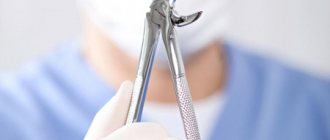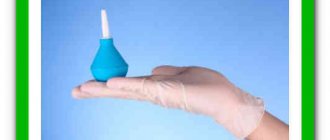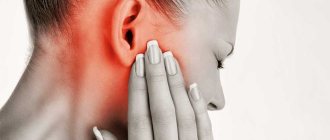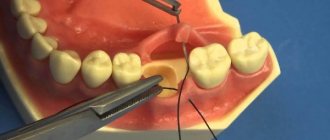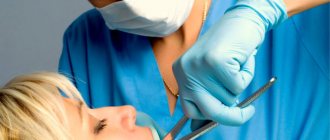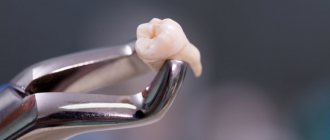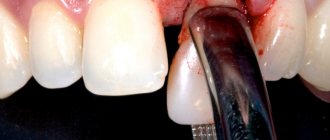Not everyone knows how sutures are removed after surgery, but this information is necessary, because it can protect against many unpleasant and unforeseen situations. Sutures should be removed by a professional after the required time has passed.
Sometimes the sutures are not removed, since after surgery special surgical threads are used, which dissolve and do not leave any marks.
However, in most cases the stitches need to be removed. What is worth knowing?
Postoperative sutures - what are they?
During any surgical operation, tissue damage occurs. During treatment, it is not always possible to do without a stitch, so the edges of the wound are pulled together and connected using staples or threads.
Recently, special surgical threads are increasingly being used that do not require subsequent removal - catgut. As the wound heals, such threads simply dissolve.
If regular threads are used after the operation, then after a certain period of time the suture must be removed. They are usually made with silk or nylon threads.
There are several types of surgical wound closure:
- primary - established immediately after injury or surgery;
- secondary - applied to a granulating wound;
- provisional - applied 4-5 days after surgery.
If a suture is placed from a non-absorbable material on a deep wound, then in the absence of an inflammatory process it remains in the tissues forever.
Postoperative sutures also differ in their type - interrupted, purse-string, wrapping. The type of suture is selected based on the wound or type of operation.
Does it hurt to remove stitches?
It all depends on the pain threshold and sensitivity of the patient. But usually the wound manages to heal within the specified time; if the doctor works professionally and quickly, then the person does not feel any pain. If sensitivity is high, the doctor may administer a mild form of anesthesia that will calm the patient. During surgery, some people simply do not have the patience to wait for the doctor to remove all the suture fragments.
It happens that the tooth sits so deep that it takes a long time and carefully to remove the threads. In any case, if you want anesthesia, then the doctor, in the absence of contraindications, must agree to give it to you. Another thing is that in free clinics this anesthesia may not greatly affect sensitivity, and you will still feel some discomfort. But everyone has their own choice.
The removal procedure is quite simple: the doctor cuts the threads with special scissors and removes their remains with tweezers. When pus appears, the threads are removed immediately, and then the wound is disinfected and sutured again.
Important! A week after the operation, visit the doctor, but if you feel that the stitches have come apart earlier or that pus has formed, then immediately go to a specialist.
When is it necessary to take (2 indicators)?
After suturing, a certain period of time must pass, usually at least a week.
If they are applied to the face or neck, they can be removed earlier, provided there is no inflammation and the wound is healing well. When and how sutures are removed after surgery, photos can be viewed on special resources.
The time for suture removal should be assessed only by a doctor and depends not only on the type of operation, but also on the general condition of the patient.
It is impossible to determine the exact time of suture removal. It all depends on the situation.
Plastic surgeon John Burns
The following facts may indicate wound healing:
- crust formation - granulation at the wound site;
- Aligning the seam in color with the base leather.
If there are seals in the wound, then this should alert you . This may indicate the onset of the inflammatory process and improper healing.
Any suspicions must be reported to your doctor immediately. Timely intervention can prevent the development of pathologies.
Everything you need to know about sutures is told by Dr. V. Pirus:
Folk remedies
You can speed up wound healing using folk remedies. For this purpose, herbal mixtures are used internally in the form of infusions, extracts, decoctions and local applications, herbal ointments, rubbing. Here are some of the folk remedies used:
Pain and itching in the suture area can be relieved with herbal decoctions: chamomile, calendula, sage. Treatment of the wound with vegetable oils - sea buckthorn, tea tree, olive. The frequency of treatment is twice a day. Lubricating the scar with a cream containing calendula extract. Applying a cabbage leaf to the wound. The procedure has an anti-inflammatory and healing effect. The cabbage leaf must be clean; it must be doused with boiling water.
Before using herbal remedies, you should definitely consult a surgeon. He will help you choose individual treatment and give the necessary recommendations.
Subscribe to us to stay up to date with the most important and latest news:
How long does it take for stitches to be removed after various operations? The operation is coming to an end, the final stage begins - suturing the patient’s tissues. Many people believe that the most important thing in an operation is the surgical manipulations themselves, and in terms of the final stage, any assistant can handle it.
How and why do seams come apart?
Sometimes situations arise when the seams come apart. In this case, you need to consult a doctor and stitch up the wound again if it has not yet healed.
They can also disperse on the surface of the skin and inside the wound. If this happens, the patient feels pain and discomfort, and bulges or pits may appear.
With discrepancy, an increase in body temperature may also be observed, and the condition gradually worsens. If the operation was performed on the abdomen, then nausea and vomiting may occur.
Feeling unwell, vomiting and nausea should alert you.
You cannot leave this situation to chance; you must immediately consult a doctor! Under no circumstances should you try to fix the seam yourself, do not touch it at all, treat it with a septic tank and go to the hospital.
Removing stitches (on legs and abdomen)
After abdominal surgery, stitches may be placed in the abdomen. They are usually removed 7-10 days after the operation.
The doctor must remove it under sterile conditions, as there is a risk of infection and inflammation may begin.
To remove sutures, sterile instruments such as anatomical tweezers and a cutting instrument are used. The wound is pre-treated with septic tanks. If there are several seams, they should be removed one by one.
Age and weakened immunity can increase the period of wearing stitches.
Plastic surgeon John Burns
You can watch a video of how sutures are removed after abdominal surgery here:
If you are interested in how sutures are removed after appendicitis surgery, then the removal technique is the same, for this you can watch other videos on the Internet. By the way, if there was a cosmetic suture, then use polypropylene, which is removed on the 10th day, or vicryl/monocryl, which does not require removal, since it dissolves.
You can watch the video below to see how sutures are removed from a leg after surgery. The technique is not much different.
It is necessary to remove the stitches, especially if the stitch hurts or a seal has appeared in this place. If you have any alarming symptoms, you should consult a doctor and get examined.
Perhaps inflammation has begun, in this case there is no need to delay going to the doctor - special treatment of the wound and early removal of the suture material will be required.
The key to success of the operation
The operation does not end with the technique of suturing. The most important thing for a surgeon is a correctly tied knot. The healing period of the patient’s tissues and organs and his safety depend on this.
There is no specific rule for the number of knots made. The more there are, the more securely the wound is fixed. In case of rupture of several sections, a large number of stitches can save the situation.
Important! When tying a knot, the most important thing is not to overtighten the thread. This can cause bleeding and risk tissue infection.
There is only one attempt at tying a knot, otherwise the wound may rupture.
Surgical needles
The main difference is in the nature of the curvature, sharpness and shape of the tip: the greater the bend, the more convenient it is to use the needle for suturing internal organs. The number of needles used depends on the personal preferences of the surgeon.
The sharpest needles are used to work on vascular tissue.
Innovation
Recently, black needles have appeared - thanks to their use, the surgeon’s eyes get much less tired.
The use of atraumatic material was patented 30 years ago. The thread is rolled into the needle, thereby preventing tissue damage during suturing. This helped avoid folding the thread in half - now operations are much simpler, the thickness of the needle matches the eye, and trauma is minimized.
Important questions
Is it necessary to treat the seam?
The key to the success of an ideal operation is maintaining surgical hygiene during suture application and caring for it during the recovery period. The suturing procedure is carried out in compliance with all sanitary standards and antiseptic requirements. Only sterile equipment is used.
How much does it cost to remove stitches after surgery?
In most public and private clinics, this service is included in the cost of the operation itself. There is no need to pay separately for suture removal.
Is it painful or not to remove stitches after surgery?
If the patient complies with all the doctor’s recommendations and the recovery period has come to an end, the removal of sutures is almost painless. After the manipulation, phantom pain may occur; the patient is prescribed painkillers.
How long does it take for stitches to be removed?
If the rehabilitation period is successful, the presence of a surgeon is not necessary; the stitches can be removed by a paramedic or nurse.
How long does it take for stitches to be removed?
| After caesarean section | from 8 to 10 days |
| After wisdom tooth removal | Absorbable materials are used more often, in rare cases - after 5 days. |
| After operations (on the chest, abdomen, face and neck, scleroplasty, laparotomy) | A week later |
Reference! Surgeons do not recommend removing sutures at home! This can be very dangerous and cause tissue and blood infections! Be sure to contact your healthcare provider.
How do you take pictures on your face?
Facial surgeries are some of the most difficult, especially when surgical material is required. You always want to maintain a beautiful appearance, and scars are far from the best decoration.
If the wound is closed correctly and in a timely manner, then there are practically no scars left, so in this matter the main thing is to trust a good specialist.
On the face, stitches are usually left in place for about a week.
Plastic surgeon John Burns
How are sutures removed after eye surgery? Essentially, the removal technology is the same everywhere, as long as they are done superficially. If they are made specifically on the cornea, and they are done after transplantation, then they are removed no earlier than after 8 months.
The removal procedure is essentially painless, but quite unpleasant. In some cases, local anesthesia may be used if the patient experiences severe discomfort. In all other cases, anesthesia is not used.
About the procedure for removing postpartum sutures
Even if a woman is patient and strong, childbirth is always a big stress for her. And when stitches are placed after them, it means that everything did not go so smoothly. Therefore, women do not want to experience additional discomfort during suture removal. But you shouldn’t worry too much about this, because compared to childbirth, this procedure is a trifle and not worth worrying about.
If the doctor used regular threads to close external and internal tears, he will tell you when they need to be removed.
We invite you to familiarize yourself with Pain after removal of a nerve or tooth: causes, treatment. How long does pain last after wisdom tooth removal? Pain in the ear, cheek, head after tooth extraction
The procedure for removing sutures causes severe discomfort rather than pain. Many women compare the sensations during the procedure to plucking their eyebrows. That is, it looks like pinpoint and sharp tingling sensations. The entire manipulation takes about 5-10 minutes, taking into account the period of preparation and treatment of wounds after removing the threads. The woman feels the latter with a burning sensation and a slight tingling sensation. Everything is not so scary, tolerable and not too painful.
How are sutures removed after laparoscopy?
Today, laparoscopic operations are often used. This intervention has its benefits.
Laparoscopy involves smaller incisions through which the doctor penetrates deeper with special devices, so the skin is not severely injured. This results in a shorter recovery period than with conventional surgery.
After the work is done, the doctor sews up the small incisions. The question arises, how are sutures removed after laparoscopy?
To begin with, it is worth noting that you need to take care of acquired wounds, this will speed up recovery. To do this, doctors advise treating them with antiseptic solutions and applying bandages, which regularly need to be replaced. The surgeon will definitely tell you about all the rules of care.
If you remove the stitches too early, they may come apart. If you delay this process, you may encounter suppuration, and the threads may begin to grow into the skin.
Plastic surgeon John Burns
The sutures themselves can be made of absorbable threads. They will disappear on their own in 6-7 days.
If threads were used that do not dissolve on their own, then you need to wait until the wound heals. Doctors cannot determine the exact timing of suture removal. This issue is resolved on an individual basis.
Often, sutures are removed 6-14 days after laparoscopy. The person himself, basically, is not in the hospital all this time, since discharge occurs much earlier.
If the sutures are removed in a timely manner, their ingrowth does not occur. In addition, recovery should be carried out without complications or discomfort. If pain occurs, consult a doctor!
On what day are sutures removed and does it hurt after rhinoplasty or blepharoplasty?
Blepharoplasty is a surgical procedure that is necessary to remove a drooping eyelid by cutting out “excess” tissue. As a rule, sutures during such an operation are applied with special catgut threads, which tend to dissolve and be accepted by the body. This is done in order not to disturb the delicate skin once again, not to provoke its swelling and give pain (after all, the face is sensitive to the slightest touch).
When performing blepharoplasty, incisions and sutures are placed as close as possible to the line where the eyelashes grow. This gives the advantage of the seams being minimally noticeable. Large scars can be removed with a series of cosmetic procedures prescribed by the doctor. Under no circumstances should you touch the seams or process them yourself. This should only be done by medical professionals. Sutures are always removed in different ways, depending on the individual characteristics of each organism and age, as a rule, the minimum is 3 weeks and the maximum is 6.
Blepharoplasty
Rhinoplasty is a surgical procedure designed to correct the shape of the nose. After the operation, the doctor applies special gauze bandages soaked in antibiotics, as well as a “splint” - a rigid plaster cast, which in no case should be disturbed during the wound healing period.
Each rhinoplasty operation occurs differently and it all depends on the extent of the surgical intervention. As a rule, after 2-4 days the doctor can remove tampons and bandages soaked in antiseptic agents and 4-5 after the operation the stitches can be removed if everything goes well and healing is not long in coming. The wounds from the sutures resolve on their own in about 2-3 weeks. The cast can be removed 10-14 days after surgery.
Rhinoplasty
Removing stitches in animals
Pets are also often seriously injured. You should not hope that deep wounds will heal on their own; you should consult a veterinarian.
If you leave everything to chance, an infection may enter the wound, which the animal simply cannot cope with. The application and removal of sutures in animals and humans is almost the same, the only difference is that the area of the body that is injured is first shaved.
Sutures in cats and dogs are also removed 5-10 days after surgery, it all depends on the degree of damage, the speed of healing and the general health of the animal.
If your dog or cat is seriously injured, do not hesitate, consult a doctor, and do not risk the health and life of your pet.
Types of postoperative sutures
Depending on the location of the operation, sutures are placed on the walls of the internal organs, or connect external tissues.- Depending on the nature of the operation, sutures can be surgical or traumatological. The techniques can be different, the only difference is that traumatological sutures are applied promptly, during the operation to eliminate defects resulting from external trauma. In surgery, surgery and localization of sutures is a deliberately planned event.
- The type of postoperative suture directly depends on the type of damaged organ, characteristics of blood vessels and tissues, and the depth of the postoperative wound.
- Seams can be made from various materials and performed using various techniques, depending on the brands and tools used.
| 1. If possible, self-excretion | Characteristics |
| Absorbable sutures | Application is possible only for tissues and organs that grow together within a period of up to 4 months. They are eliminated from the body independently and completely. |
| Non-absorbable sutures | Must be removed after complete healing of the postoperative space |
| 2. By thread type | |
| Natural threads | Silk, ketchut, cotton, linen have a number of disadvantages. Non-absorbable sutures are placed on their basis. Linen and silk are practically not used due to the high degree of conductivity of pathogenic microorganisms into the body. |
| Synthetic threads They differ in material:
| They are able to be eliminated from the body independently due to biodegradation. It is possible to use absorbable sutures. The main disadvantage is the unpredictability of the material. Stitching with catgut is extremely dangerous - it is unknown how long the material will hold the tissue. If such material ruptures before the tissue heals, it can cause deterioration in the patient. |
Reference! The patient is not informed which sutures the doctor will use in his work. The choice is made based on personal preference and operating situation.
- Differences in thread structure: braided and monofilament (monofilament). The choice is based on the need to stitch the wound less or more tightly: monofilament is much weaker, rope braid is correspondingly stronger.
- Cosmetic sutures and sutures for connecting internal organs
Cosmetic sutures connecting the patient’s skin must not only complete the operation correctly, but also not create problems in later life. Ideally, the seam should not remain, or be more or less visible. For these purposes, a continuous intradermal cosmetic suture or metal staples are most often used.
Sutures for connecting internal organs have different techniques, depending on which organ the operation was performed on.
Is it possible to carry out the procedure at home?
It is recommended to remove postoperative sutures in the hospital and should be done by a good doctor. In some cases, the procedure is performed by a nurse.
There are cases where removal at home is allowed, but you must carefully prepare for the procedure. If possible, still consult a doctor to avoid unpleasant consequences.
Remove stitches at home only if you are sure of a good result, all deadlines have passed and the wound is healing normally. If the wound looks inflamed, or even worse - it’s festering, then in this case, under no circumstances try to do anything on your own, you need to consult a doctor.
Sequence of actions for self-removal of sutures:
- Decide on your tools and thoroughly sterilize them. You can boil the instrument and then treat it well with alcohol or hydrogen peroxide. Do not remove under any circumstances with a knife or blunt scissors; the tool must be safe and at the same time sharp enough!
- Thoroughly wash and sterilize the seam and the area of skin around it.
- Lift the first knot and gently pull; when a light thread appears, it needs to be trimmed. Now carefully pull out the thread using tweezers.
- Continue doing the same for all nodes. Do not pull the knot through the skin, only the thread itself. Otherwise, you will damage the skin and may start bleeding.
- Now you need to carefully check the area so that there are no threads left in it. Clean the wound and apply a sterile dressing.
In principle, there is nothing complicated, but the slightest mistake or wrong approach can lead to serious problems. Therefore, if you still have doubts, do not take risks.
At home, it is not recommended to remove stitches, especially after major operations or delicate cosmetic ones. Sometimes as healing progresses, the surgeon will determine whether it needs to be left for a few more days.
Plastic surgeon Justin Yovino (California)
There are cases when the wound requires specific care, which can only be carried out in a hospital by a professional. Therefore, patients are strongly discouraged from risking their health and the “beauty” of the future scar.
When to remove gum sutures
Asepta dental gel
After complex manipulations, the patient should carefully follow all the surgeon’s instructions. Typically, complete healing and restoration of soft tissues takes at least 7-10 days. During this period, the wound and sutures are treated with antiseptics, lubricated with special solutions and ointments to improve blood circulation (Asepta, Metrogyl Denta, Solcoseryl). Sometimes antibiotics are required to treat possible health complications.
The final decision on when to remove the sutures on the gums is made differently in each case. Healing occurs in patients purely individually and depends on age, hormonal levels and general immunity. Threads can be removed if the following positive changes are observed upon visual inspection:
- the mucous membrane is not swollen and has no signs of suppuration;
- the person does not have shooting pain, fever or itching inside the jaw;
- There is no discharge or unpleasant odor from the wound when pressed;
- periodontal tissues have a uniform pink color.
When using self-absorbable material, in most cases the specialist still removes the threads and does not leave them for a long period. If you do this before a clot forms in the socket, inflammation may begin. The dentist will need to open the inflamed area, clean it again, and apply new stitches.
Why do you need to shoot?
Sutures must be removed within the time strictly specified by the doctor. If this is not done on time, inflammation will definitely begin. Do not allow this to happen, because then you will have to undergo additional treatment.
In general, inflammation in a wound can lead to serious problems, including infection, so it is necessary to closely monitor the condition and visit a doctor in a timely manner.
The timing of wound removal and healing is an individual process. It is simply impossible to say exactly and definitely when and how to remove stitches.
Each situation is considered exclusively on an individual basis by a surgeon. After removal, it is necessary to strictly follow all the requirements and recommendations of the doctor, only in this case complete healing will be successful.
Possible complications
If treated incorrectly, it is possible to introduce an infection into the wound, and the sutures may not heal for a long time due to the individual characteristics of the patient’s body. Another possible complication is a large loss of blood; if the threads break, the wound begins to bleed heavily. In all of these cases, immediately visit your doctor and you will be prescribed a new treatment.
Today, wisdom teeth do not need to be removed, because for most people they cause discomfort only when they emerge. It has been established that with proper oral care, wisdom teeth do not interfere with a person. Of course, treating caries on them is an unpleasant and complicated procedure, and even when such a tooth is inflamed, the sensations are not pleasant. Temperature often occurs and neighboring teeth begin to ache.
Inflamed hood over a wisdom tooth
Removal of a wisdom tooth is recommended if it erupts poorly and takes a long time, if it interferes with neighboring teeth, if it is affected by caries. By the way, in the second case, before the removal operation, another procedure is prescribed - removal of the “hood” - a piece of tissue that covers the tooth, preventing it from coming out. All these manipulations can be accompanied by complications, but only if the doctor did not work conscientiously, and you neglected the rules of hygiene and regularly went to “pick” your unfortunate tooth.
If, after the examination, you are prescribed surgery, do not be afraid of it. The main thing is to follow all the rules of oral care and hygiene, make sure that the stitches do not come apart and do not touch or rub the wound with your tongue, even if it itches. After a week or a week and a half, the unpleasant consequences of tooth extraction will completely disappear.
